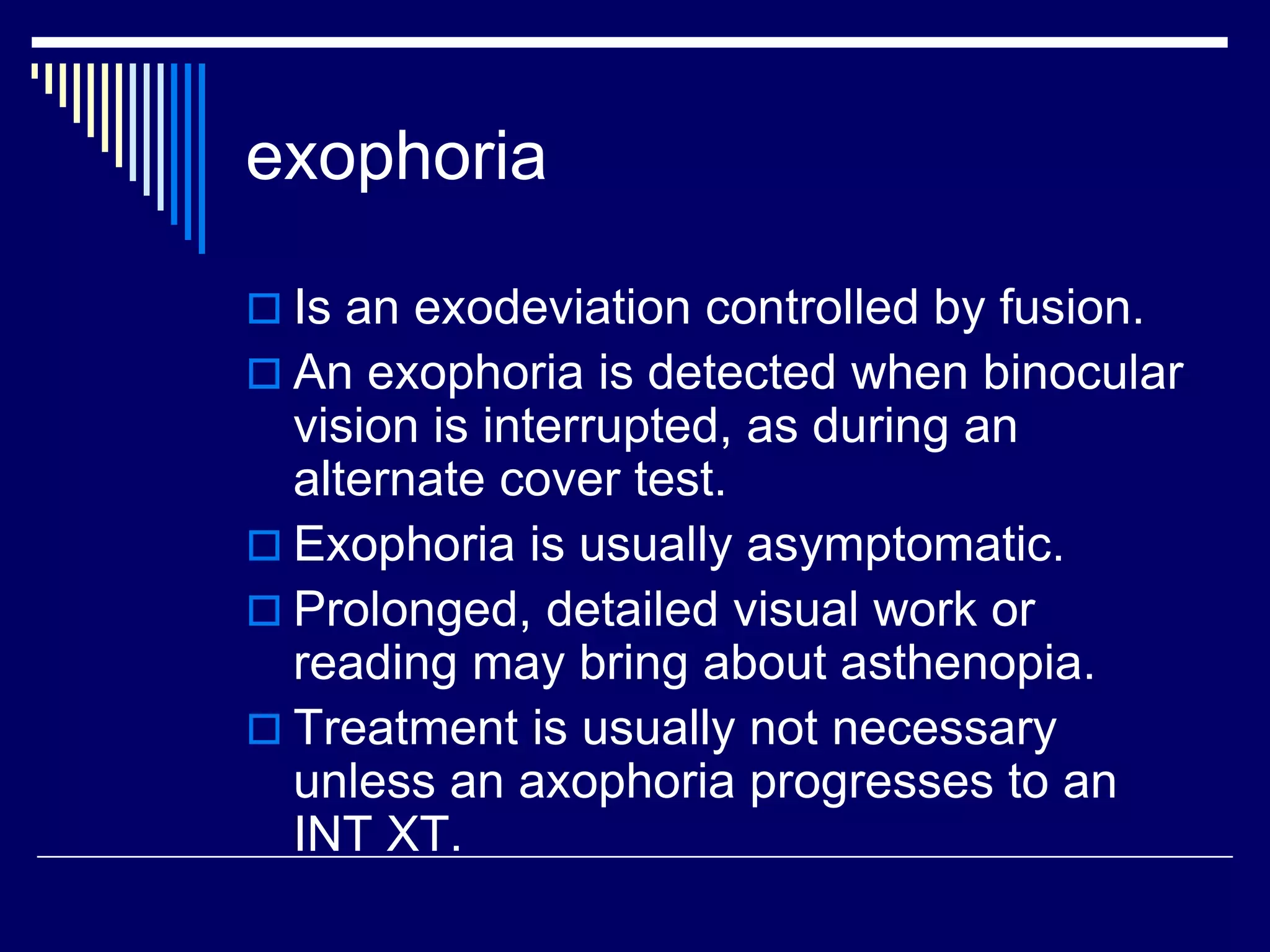This document discusses various types of exodeviations (eye turning out), including their etiology, clinical characteristics, classification, treatment options, and management. The main types covered are intermittent exotropia (the most common type), pseudoexotropia, exophoria, convergence insufficiency exotropia, and constant exotropia. Nonsurgical and surgical treatment approaches are described for different exodeviation subtypes.













































